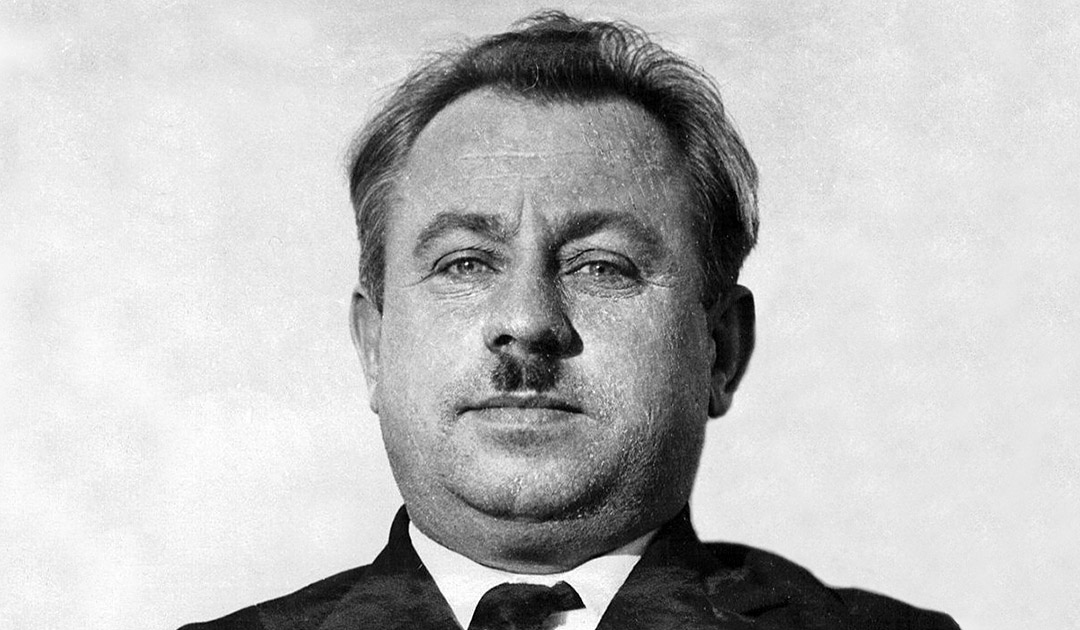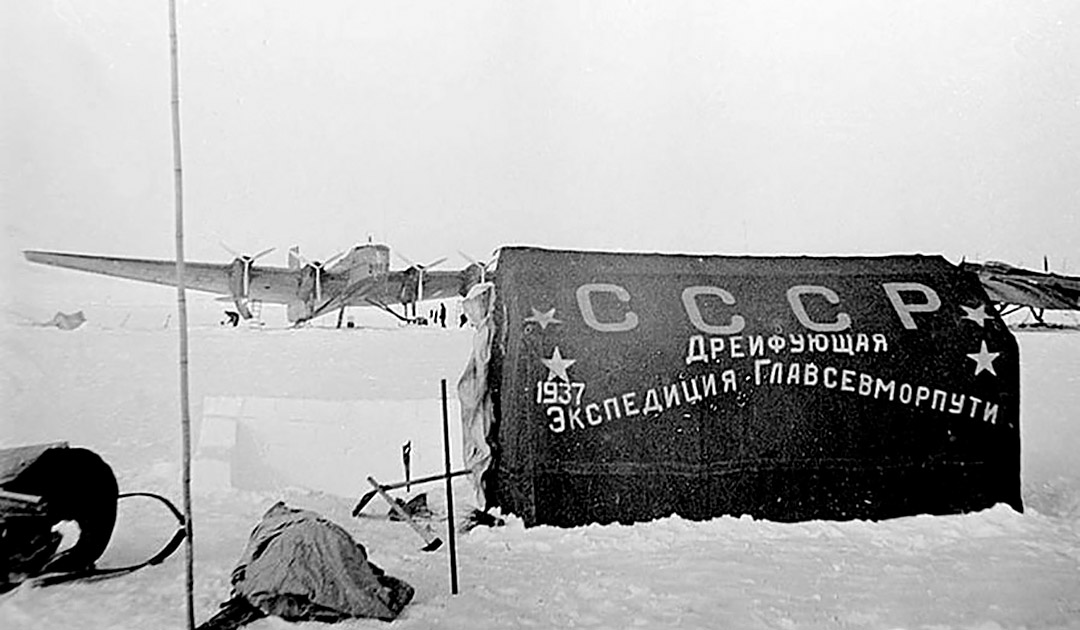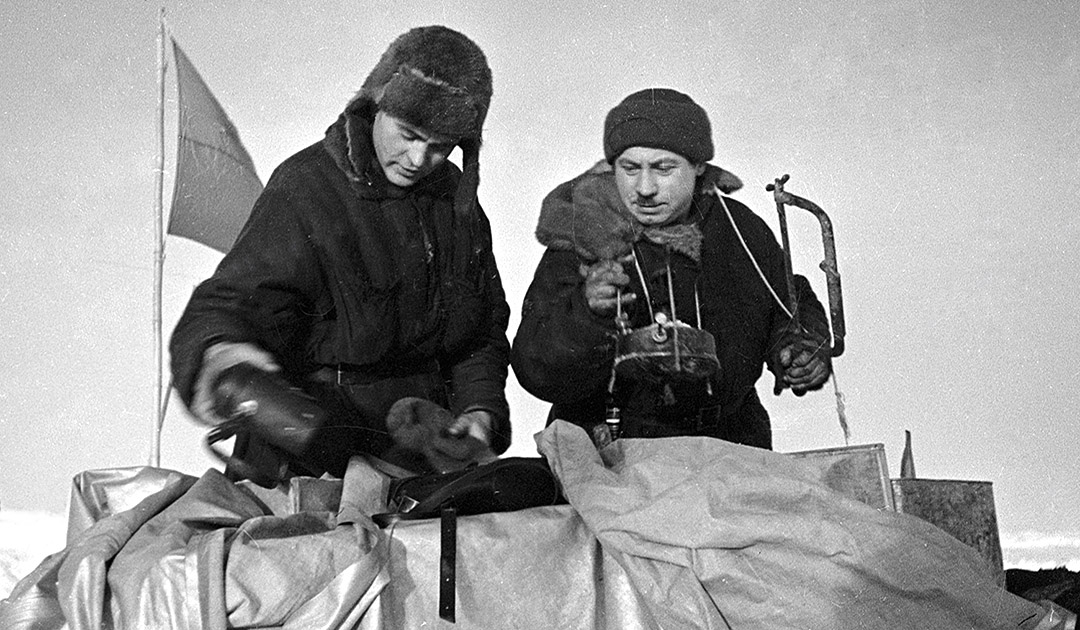
If the two had been honest adventurers, the Americans Robert Peary and Frederick Cook could have saved themselves their squabbles: because neither of them really had reached the North Pole in 1909, certainly not as the first, this is a fact nowadays. Stupidly, the dispute was fought so loudly that it fell into oblivion who was really the first person at the North Pole. At least, the first to be confirmed to be so close to the pole that he could almost touch it was Ivan Dmitrievich Papanin. He led the North Pole-1 expedition in 1937, almost thirty years after Peary and Cook, drifting as close as 60 kilometres south of the North Pole. And this practically without physical exertion.

Ivan Papanin was born in Sevastopol in 1894 as the child of poor parents, his father was a sailor, the mother seamstress, three of his nine siblings did not survive childhood. As a Red Guard, the trained turner ran a tank repair workshop for two years, then smuggled weapons for the partisans and finally became commissioner of the headquarters of maritime technology and maritime management in 1922. As head of the Central Administration for Postal and Telecommunications, he came into contact with the Arctic for the first time, and in 1932 he was appointed head of the polar station in Tichaja Bay on Franz Joseph Land. There, the strict communist re-mapped the islands and discovered, among other things, magnetic anomalies. Two years later, he wintered at Cape Chelyuskin on the Taymir Peninsula, researched the weather and married his fellow researcher Anna Viktorovna Fyodorov.
Papanin’s rise to Hero of the Soviet Union began when the Politburo in 1936 decided to set up an ice drift station at the North Pole to mark the 20th anniversary of the October Revolution – with him as expedition leader.

The adventure begins on May 21, 1937: An Antonov-6 puts the participants on the ice at 89º 54′ North 78º 40′ West, only about 20 kilometers from the North Pole. Other planes bring ten tons of material, tents, food, equipment, and when the last plane takes off 17 days later, there remained on the ice: Papanin, the geophysicist and meteorologist Yevgeny Fyodorov, the oceanologist Pyotr Petrovich Shirvshov and the radio operator Ernst Theodorovich Krenkel. And Papanin’s dog Freulich. The ice floe on which they are located is 3200 metres long and 1600 metres wide.
The researchers spent a full 274 days drifting on the ice floe until they were rescued by the icebreaker “Jermak” on February 19, 1938, about 2,500 kilometers away on the east coast of Greenland. The ice floe was only 30 meters wide and less than 70 meters long and Papanin had emaciated by 30 kilograms.

What the men explored on the drifting ice was astonishing: they explored the depth of the Arctic Ocean and discovered a ridge on the seabed, from which they also immediately took soil samples. They measured the water and discovered a counter-current 100 meters below the water level. They specified the magnetic declination with which magnetic compasses work. They were astonished to discover that sometimes it was warmer on the ice than in Moscow. They refuted Fridtjof Nansen’s theory that the northern Arctic Ocean was free of animal life. And they were the first people to stand so close to the North Pole.
For this, Papanin was awarded the highest honors that the Soviet Union had to give. He became the most famous celebrity of his time.
The only downside: When an airship took off on the Kola Peninsula in February to rescue the men, it crashed, killing 13 crew members.

Papanin, on the other hand, was appointed head of the Soviet research fleet with the task of expanding it, and lived at the Volga for 20 years as the head of a biological station. He died in Moscow in 1986 at the age of 91. He was almost forgotten. An icebreaker, a cape on the Taimyr Peninsula, a mountain range in Antarctica and an underwater mountain in the Pacific Ocean bear his name today. The German translation of his memoirs about the Drifteis expedition Nordpol-1, “Life on the Ice Floe”, is only available in antiquarian booksellers.
Author: Greta Paulsdottir





